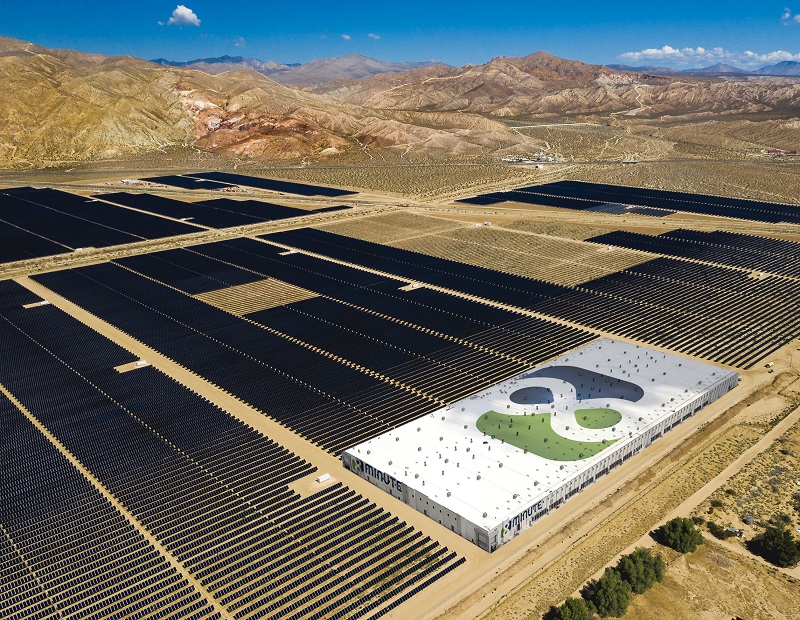L.A. Leads the Way with Record-Setting Project
The city's deal for solar generation and storage is the largest for a U.S. city to date.
In a landmark for alternative energy sourcing, Los Angeles has approved power purchase agreements for the world’s largest city-owned photovoltaic operation, and the largest solar and battery storage system in the U.S.
When it comes online in 2023, the Eland Solar and Storage Center will encompass two large-scale solar facilities on 2,650 acres some 70 miles north of Los Angeles in California’s Kern County. The facilities will have a capacity of 400 megawatts and store as much as 1,200 megawatts, which can be distributed during peak demand.

Eland Solar and Storage Center, Kern County, Calif. Rendering courtesy of 8Mile
The solar and storage center will be the Los Angeles Department of Water and Power’s first utility-scale, integrated solar and battery project that provides in the evening hours, which automatically reduces the need for natural gas when renewable energy isn’t available.
Also of note is the project’s pricing. Chosen from 130 proposals, the Eland project comes with fixed costs of less than 2 cents per kilowatt hour, said by officials to be the lowest in the U.S. per date.
The project’s developer, 8minute and Southern California Public Power Authority, entered into a power purchase agreement. In a separate deal, LADWP agreed to purchase a share of the renewable energy from the Eland 1 & 2 facilities. 8minute is required to build and operate the facility for 25 years.
The project with the larger battery option exercised will increase a ratepayer’s bill by 0.070 cents per kilowatt-hour, estimated Daniel Beese, an electrical engineer associate at LADWP.
Zero-Carbon Goals
The Eland project falls is part of Los Angeles’ Green New Deal, which aims to build a zero-carbon electricity grid and 80 percent renewable energy by 2036 and 100 percent renewable energy by 2045. Eland Solar & Storage Center is anticipated to help the city hit 55 percent renewable energy by 2025 as well as the 2036 and 2045 benchmarks.; the Eland project will bump up the renewable share of LADWP’s energy source from 32 percent to 39 percent.
The Eland facility will prevent the equivalent of 727,360 metric tons of greenhouse gases that would be emitted by a conventional plant.
To date, almost 37,000 megawatts of utility-scale solar projects in operation in the U.S., according to stats from the Solar Energy Industries Association (SEIA). What makes a solar project “utility-scale” is the size and the fact that it sells electricity to wholesale utility buyers rather than consumers, SEIA reports.
Other municipalities can replicate a solar and battery storage facility but only if they have a municipal utility and transmission available to deliver the energy to the customers, Beese said.
The project developer, 8minute Solar Energy, has a portfolio of more than 14,000 megawatts, which encompass projects like the 260 MW Mount Signal Solar Farm in California as well as the 300 MW Eagle Shadow Mountain Farm in Nevada, which is slated to come online at the end of 2021.
In executing the Eland project, 8minute will become the largest provider of clean energy to Los Angeles. The fact that the Eland will be engineered to provide fully dispatchable power under LADWP’s control is also a capability previously reserved for large fossil fuel power plants, according to the company.
As of March 2019, 16 utility-scale battery storage sites with a capacity of at least 20 megawatts were operating nationwide, according to the U.S. Energy Information Administration. The agency also anticipates utility-scale battery storage will grow substantially and potentially exceed 2,500 MW by 2023.







You must be logged in to post a comment.